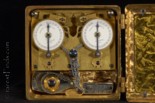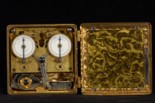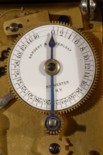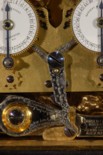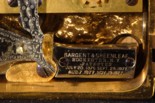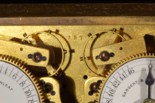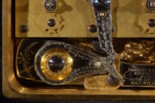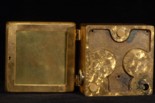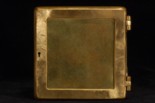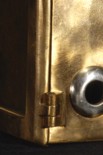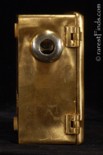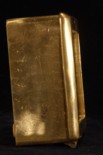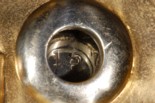Sargent & Greenleaf model 4 Safe Time Lock, one of only fifteen known!
Patents, click on any image to see larger image!
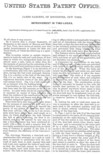

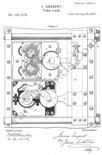

Exceedingly rare Safe-Time-Lock manufactured by Sargent & Greenleaf in Rochester NY. The most comprehensive book ever written on the subject, considered "the Bible" by safe-time-lock collectors, was written by the late John Erroll and his son David Erroll. The book was published with the title, "American Genius, Nineteenth-Century Bank Locks and Time Locks." John Erroll was the curator of the John M. Mossman collection at the General Society of Mechanics and Tradesmen of New York, N.Y., USA. "American Genius" is the most complete survey of these marvels of complexity and their dramatic history.
On page 196, John Erroll states, "The forty-six-hour Model 4 was made until sometime between 1880 and 1882, when it was updated to a forty-eight-hour movement. Sargent made 365 of the forty-six-hour Model 4, of which fifteen are thought to remain today. The lock offered here bears the serial number 157 as shown in pictures #6 and #13. The serial number 157 is also stamped into the top of the bolt.
According to the leading collector/specialist in this field, the specimen offered her is the very first version with the different Geneva stops, whatever this means... I have no idea.
On page 196 in Erroll's book is an identical model 4 shown; that lock has the serial number 217.
The following patent dates are engraved on the bolt:
July 20, 1875 (patent # 165,878); September 25, 1877 (patent # 195539; August 7, 1877 (patent # 193.973; and November 13, 1877 (re-issued patent with the # 7947.)
This early version was introduced in July of 1878 and has two forty-six-hour movements and has two white enamel dials. The lock has a solid door which seems to be gold plated. Solid doors are called "coin vault doors" as they were used on safes that had a lot of traffic with coins. The solid door protected the safe-time-lock mechanism from damage and breakage of the glass door which you would find on safes used only for paper money.
This safe-time-lock weighs 5 lb and 6 ounces. The measurments are 4-7/8 by 4-7/8 by 2-1/4 inches.
Condition:
The two clockworks are in perfect working order. The entire Time Lock is in perfect condition.
History:
The "Great Burglary," the robbery of the Northampton National Bank in Northampton, Massachusetts on January 26, 1876, did not start at the bank but shortly after midnight at the cashiers private residence. After being tortured and threatened to be killed by the seven burglars, he revealed the combination to the safe. The robbers stole $1,6 million in cash, bonds, and other securities. This robbery went down as the biggest in US history.
The banking industry was clear from this point on; the weakest link in the security system was no longer the locks, but the human element. Bankers would need a lock that could not just keep the robbers out, but the bankers themselves in order for them to be safe. The safe time lock was the answer. The safe time lock was already invented but not used as the needed clock works of the time were not very reliable. If the clock failed, the safe could not be opened the next morning. Redundancy was needed in case the clockwork failed. The most secure time locks used six clockworks and were built by Yale and Towne. There were only 13 built of these locks with six clock movements and there is only one example extant, to read about it, click here!
The story of Sargent & Greenleaf in the lock and security industry began in 1857 when James Sargent, an inventive young sales representative for Yale and Greenleaf Lock Manufacturers, designed a lock that far surpassed any security device available at that time. The result was Sargent's Magnetic Bank Lock, the first successful key-changeable combination lock that allowed the number sequence — or combination — to be easily reset with a special key. It gained immediate acceptance from safe manufacturers as well as the United States Treasury Department, securing Sargent's reputation as an inventor of specialized high-security locking systems. Sargent & Greenleaf is still in business, to see the company website and read about their history, click here!
Inventory Number 01032;
Price: Sold!
